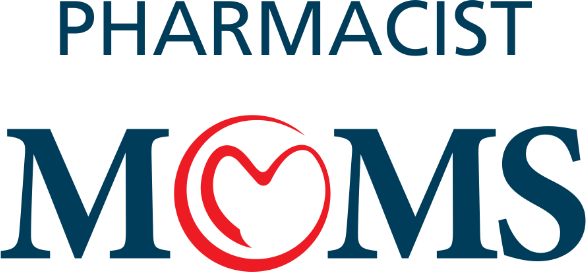A Day In the Life of An Academic Pharmacist
My position is somewhat of a unicorn in the academia world because I primarily train physician and pharmacy residents on our inpatient medicine service as opposed to focused teaching of pharmacy students. Though residents are my main learners, I do take students on APPE rotations, facilitate labs, case studies and small group discussions and lecture to other learners across campus.
A Day In the Life of an Academic Pharmacist
I recall sitting in a therapeutics lecture as a pharmacy student thinking my professor had it easy. She showed up to lecture for a few hours each week, a handful of weeks each year—she could spend the rest of her time preparing lectures. I honestly thought that was all she did until I completed an APPE rotation with her and realized she had a practice site with responsibilities to the site, committee work, research, service, student mentoring and teaching outside of the College of Pharmacy.
She stayed busy, but seemed fulfilled by her career and autonomy. This experience influenced my decision to pursue academia as a career after I completed my PGY1/PGY2 Pharmacotherapy residency training. I stayed with Idaho State University in Pocatello, taking a clinical assistant professor position with dual appointments in the Department of Family Medicine and the College of Pharmacy.
My position is somewhat of a unicorn in the academia world because I primarily train physician and pharmacy residents on our inpatient medicine service as opposed to focused teaching of pharmacy students. Though residents are my main learners, I do take students on APPE rotations, facilitate labs, case studies and small group discussions and lecture to other learners across campus.
Here’s a glimpse into my typical day:
5:50 am: Alarm goes off. Let’s be honest, I’ll snooze until at least 6:00. Shower, get dressed, do my hair (top knot or pony) and makeup. Dry shampoo is my best friend! Husband leaves for work around 6:15 today. He’s a physician assistant in orthopedic surgery, so his surgery days are my solo mornings.
6:40 am: Eat breakfast and get the girls (3 year-old and 9 month-old) up and dressed. Pack my bags—pump bag, computer bag, lunch bag, diapers and wipes for the baby and swimsuit and towel for the 3 year old’s water day. It’s a miracle I don’t forget anything.
7:30 am: Leave the house. My girls go to two different daycare facilities because of age restrictions. Can’t wait until the baby is one! Drop-offs go smoothly so I make it to work by 8 am.
8:00 am – 9:15 am: Spend an hour answering emails—So. Many. Emails! Questions from a speaker for the Idaho Society of Health-System Pharmacist’s Fall Conference (I’m the Education Chair), set up an appointment with my research student, and then address a conflict with the residents schedules. Finally, I take a few minutes to update my ever-expanding to-do list. Sometimes I wish I could start all over with a brand-new email address. And share it selectively.
9:15 am: Pump break—I’m lucky enough to have a designated room with a comfy chair, a sink to clean my supplies and freezer to store the loot.
9:30 am: Drive to the hospital to precept patient care plans with the pharmacy resident.
9:40 am: Take the stairs to the 4th floor—have to fit exercise in somewhere!
9:45 am: Catch my breath enough to precept patients with the PGY1 resident. He presents a brief subjective and objective history followed by assessment and plan for relevant medication related problems. We discuss his plan for the most critical patients. I ask questions and assign readings.
10:30 am: Rounds start (mostly) on time today. I make a point to listen closely and review patient charts as we go because—brand new medical interns. Need I say more? Although I start to wonder if it’s the third-year medical residents I need to worry about after this interaction:
Dr. U (R3): “Problem number one sepsis, secondary to cellulitis of the leg. Patient also has a hematoma of the same leg from a recent fall.”
Me: “What is your plan for the patients’ antibiotics? She currently has daptomycin and vancomycin ordered.”
Dr. U (R3): **Looking lost** “Uhhhhh”
Me: “Would you like to continue both the vancomycin and the daptomycin?”
Me: *in my mind* Please say no, please say no, please sa—
Dr. U: “Yes! Because it will be awhile before the vancomycin level is therapeutic so I’d like to make sure patient is covered with the daptomycin in the meantime.”
Me: *long blink* “Okaaaay. Well, let’s pause there for a second. Help me understand this infection a little better.”
I fire off questions about the patient such as…”She has a cellulitis? How big is the cellulitis? Do you suspect infection in the proximal hematoma—like an abscess? No? Okay, do you think this isn’t a strep cellulitis? How’s her renal function? Do you suspect MRSA?”
Me: “Okay, so you don’t have any reason to believe this is MRSA. What regimen would you send this patient home on, maybe that will help us narrow our coverage?”
Dr. U (R3)- “Well I’d just keep the IV vanco and continue oral vanco when she goes home.”
Me: *loooooong blink* try not to laugh, yell or cry. “Okay, let’s talk about that for a minute…”
11:20 am: We pause rounds so my PGY1 resident can teach the team about anticoagulation—his first team teaching moment of the residency year. The sympathy nerves get to me and I spend the first 30 seconds freaking out for him—totally unwarranted because he nails it. Relevant information and an engaging teaching style—tough skills to teach. I almost cry happy tears. The residency year just got a lot easier!
11:26 am: Phone vibrates with this message from our attending physician—“Your resident is a fantastic teacher!”
11:40 am- Leave rounds a little early to swing by daycare and nurse the baby before her nap. So glad I live and work in a 10-minute radius.
12:05 pm- Head back to my office on campus. I’m teaching at the Noon Conference—Prescribing Pearls—to the family medicine residents today. I target my content towards our new family medicine interns. Many have never written a prescription…or learned how to write one in medical school, for that matter. To put it kindly—they’re clueless. I cover the basics of prescription writing—legal requirements versus good practice, ISMP abbreviations to avoid, etc. I also share prescribing tips like asking about refills at each appointment, canceling old prescriptions with the pharmacy, and including an indication as part of the sig.
I love giving this didactic every year. I get to teach them the basics of the pharmacy world and feel like a genius because it’s all “new” to them. Conversation surrounding our last topic of the hour—legal and ethical considerations of prescribing for self, family and friends—gets heated. This is my first year including this subject and I’m shocked by some of the reactions. When the presentation is over, I take notes on how it went and changes needed for next year.
1:15 pm: Eat a quick lunch—leftover burrito bowls from dinner the night before—while I answer a few more emails.
1:30 pm: Meet with a P3 pharmacy student doing a research elective with me. We plan to survey community health workers about how they help with medications and their training to do so. This student is a Rockstar. She owns her project. I spend the hour helping her edit the survey. We make a few changes to our Institutional Review Board form before submitting.
2:30 pm: Try to tackle a few items on the to-do list. I make it through what feels like never-ending resident evaluations in PharmAcademic, update my lecture for the following week, and coordinate with speakers for the ISHP Fall Meeting.
3:30 pm: Another pump break.
3:50 pm: Back to work on the to-do list.
4:10 pm: One of my PGY2 Pharmacotherapy residents drops by to discuss a patient case. The patient was bridged with enoxaparin perioperatively and just saw her surgeon complaining of calf pain. My poor resident is devastated that the patient may have a clot. Another preceptor and I review the course of therapy with the resident and determine there was nothing that should’ve been done differently. We explain that medicine isn’t foolproof, secondary prevention isn’t guaranteed and sometimes the worst outcome happens even when we do everything correctly.
4:40 pm: Engage in a philosophical discussion on the future of the pharmacy with my office mate—an almost daily occurrence for us. We ponder the effects of Amazon’s purchase of Pillpack on community pharmacy, whether I should encourage or discourage my brother from pursuing pharmacy, and if provider status is really necessary (sacrilege, I know!).
5:00 pm: Leave to get the girls from daycare. I pick up the 3 year old first. I’ve inadvertently trained her to ask “what you brought me?” when I pick her up every day, and today is no different. I let her choose a fruit leather flavor and she asks me to open it, which I do. She cries because I didn’t open it the “right way like daddy does it”. It’s a no-win situation.
5:30 pm: Arrive at home to an apron-clad husband pulling salmon off the Traeger. Dinner is ready! I love it when he beats me home.
6:30 pm: Clean up dinner, bathe the babes, jammies, prayers and bedtime stories. Husband takes the three year-old while I put the baby to sleep.
7:30 pm: Crack open the email from our ASHP Accreditation Site Surveyor and get to work on collecting documents for our upcoming site visit. I try not to work at home when I can help it. I’m successful most nights—tonight isn’t one of them.
9:00 pm: Think about exercising, but go for a bowl of sherbet instead. Veg on the couch reading a book.
10:00 pm: Get ready for bed and hit the hay so I can do it all over again tomorrow!
I’ve discovered many hidden rewards in teaching—and encountered so many challenges. Some days I feel like a well-paid babysitter. I hate those days! Some days seeing my learners succeed makes me proud enough to share their success with the mailman. I love those days! Most days fall somewhere in between. Each one varies—different learners, different responsibilities, different challenges and different successes. And that’s why I love it!
Kasidy McKay, PharmD, BCPS
Clinical Assistant Professor
Idaho State University









.png)



